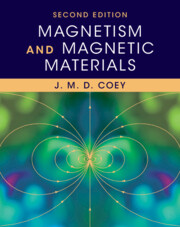Refine listing
Actions for selected content:
1295956 results in Books
Part II - War in Mexico
-
- Book:
- Protecting Women
- Published online:
- 27 November 2025
- Print publication:
- 11 December 2025, pp 143-302
-
- Chapter
- Export citation
Chapter 11 - The Behavioral Variant of Frontotemporal Dementia: Preclinical to Advanced Dementia
- from Section 2 - The Dementias
-
-
- Book:
- The Behavioral Neurology of Dementia
- Published online:
- 17 November 2025
- Print publication:
- 11 December 2025, pp 165-179
-
- Chapter
- Export citation
Chapter 9 - Regional Traditions in the Material Culture of Food
- from Part II - Consumption
-
- Book:
- The Power of Peasant Consumers
- Published online:
- 27 November 2025
- Print publication:
- 11 December 2025, pp 169-192
-
- Chapter
- Export citation
42 - The Digital Era
-
-
- Book:
- The Cambridge History of Australian Poetry
- Published online:
- 19 November 2025
- Print publication:
- 11 December 2025, pp 783-802
-
- Chapter
- Export citation
Chapter 13 - Curse Tablets, Amulets, and Spells
- from Part II - Beliefs and Practices
-
-
- Book:
- Personal Religion in the Ancient Greek World
- Published online:
- 25 November 2025
- Print publication:
- 11 December 2025, pp 296-318
-
- Chapter
- Export citation
22 - Australian Poetry and the Rise of a Suburban Quotidian (1950–2000)
-
-
- Book:
- The Cambridge History of Australian Poetry
- Published online:
- 19 November 2025
- Print publication:
- 11 December 2025, pp 420-438
-
- Chapter
- Export citation
Acknowledgments
-
- Book:
- Catalytic Capital
- Published online:
- 27 November 2025
- Print publication:
- 11 December 2025, pp xiv-xvi
-
- Chapter
-
- You have access
- Open access
- HTML
- Export citation
Chapter 12 - Prices of Food-Related Objects
- from Part III - Standards of Living
-
- Book:
- The Power of Peasant Consumers
- Published online:
- 27 November 2025
- Print publication:
- 11 December 2025, pp 235-264
-
- Chapter
- Export citation
Chapter 2 - Small and Large Worlds, Post-Newtonianism and Para-Humanism
-
- Book:
- Entanglements in World Politics
- Published online:
- 27 November 2025
- Print publication:
- 11 December 2025, pp 63-102
-
- Chapter
-
- You have access
- Open access
- HTML
- Export citation
26 - Australian Expatriate Poets
-
-
- Book:
- The Cambridge History of Australian Poetry
- Published online:
- 19 November 2025
- Print publication:
- 11 December 2025, pp 492-507
-
- Chapter
- Export citation
Transliterations and Citation Practices
-
- Book:
- Everyday Occupation
- Published online:
- 27 November 2025
- Print publication:
- 11 December 2025, pp xvii-xviii
-
- Chapter
-
- You have access
- Open access
- HTML
- Export citation
14 - Kenneth Slessor’s Visualism
-
-
- Book:
- The Cambridge History of Australian Poetry
- Published online:
- 19 November 2025
- Print publication:
- 11 December 2025, pp 258-274
-
- Chapter
- Export citation
Primary Source Abbreviations
-
- Book:
- The Philosophy of Antoine Arnauld
- Published online:
- 27 November 2025
- Print publication:
- 11 December 2025, pp xv-xx
-
- Chapter
- Export citation
Contents
-
- Book:
- The Philosophy of Antoine Arnauld
- Published online:
- 27 November 2025
- Print publication:
- 11 December 2025, pp vii-ix
-
- Chapter
- Export citation
Chapter 8 - Knowledge of God
- from Part II - God
-
- Book:
- The Philosophy of Antoine Arnauld
- Published online:
- 27 November 2025
- Print publication:
- 11 December 2025, pp 181-199
-
- Chapter
- Export citation
Chapter 19 - Plato
- from Part III - Individuals
-
-
- Book:
- Personal Religion in the Ancient Greek World
- Published online:
- 25 November 2025
- Print publication:
- 11 December 2025, pp 428-451
-
- Chapter
- Export citation

Magnetism and Magnetic Materials
- Coming soon
-
- Expected online publication date:
- December 2025
- Print publication:
- 31 December 2025
-
- Book
- Export citation
Contents
-
- Book:
- Kant and the Power of Perception
- Published online:
- 27 November 2025
- Print publication:
- 11 December 2025, pp v-vi
-
- Chapter
- Export citation
Notes
-
- Book:
- American Performance in 1976
- Published online:
- 27 November 2025
- Print publication:
- 11 December 2025, pp 269-318
-
- Chapter
- Export citation
Chapter 12 - Primary Progressive Aphasia
- from Section 2 - The Dementias
-
-
- Book:
- The Behavioral Neurology of Dementia
- Published online:
- 17 November 2025
- Print publication:
- 11 December 2025, pp 180-198
-
- Chapter
- Export citation
